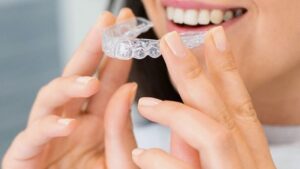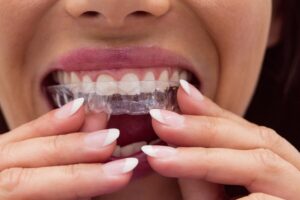However, many people wonder: Does flossing make gaps in teeth? Let’s explore the facts to debunk this common misconception and understand the benefits of proper flossing.
Understanding Flossing and Its Role in Oral Health
Flossing targets the spaces between teeth, where plaque and food particles accumulate. By removing this debris, flossing helps prevent gum disease and cavities. The American Dental Association (ADA) recommends flossing at least once a day to maintain optimal oral health.
Does Flossing Really Create Gaps?
Myth vs. Fact:
The idea that flossing creates gaps is a myth. Flossing, when done correctly, does not widen the spaces between your teeth. On the contrary, it helps keep your gums healthy and your teeth firmly in place.
Improper techniques, however, can damage gum tissue and create the illusion of gaps over time. For example:
- Snapping floss harshly can injure gums.
- Using excessive force may lead to gum recession, exposing more of the tooth.
Proper Flossing Technique
To reap the full benefits of flossing without risking harm, follow these steps:
- Use the Right Length of Floss: About 18 inches, with most wrapped around your middle fingers.
- Gentle Motion: Slide the floss gently between your teeth in a sawing motion. Avoid snapping it against your gums.
- Create a ‘C’ Shape: Curve the floss around each tooth and gently slide it under the gumline.
- Use Fresh Sections: Move to a clean section of floss for each tooth to avoid spreading plaque.
What Actually Causes Gaps in Teeth?
While flossing doesn’t cause gaps, several other factors might:
- Gum Disease: Inflammation and infection can damage the gums and bone, leading to shifting teeth.
- Tooth Loss: Missing teeth create spaces, allowing adjacent teeth to move.
- Genetics: Some people naturally have gaps due to their dental anatomy.
- Oral Habits: Behaviors like thumb-sucking or tongue thrusting can alter alignment over time.

Benefits of Regular Flossing
Flossing isn’t just a routine; it’s an investment in your overall health. Here’s why:
- Prevents Gum Disease: Removes plaque that leads to gingivitis and periodontitis.
- Reduces Cavities: Cleans areas your toothbrush can’t reach.
- Improves Breath: Eliminates trapped food particles that cause bad breath.
- Supports Overall Health: Good oral hygiene is linked to lower risks of heart disease and diabetes.
Alternatives to Traditional Flossing
If traditional flossing isn’t for you, consider these alternatives:
- Water Flossers: Use a pressurized stream of water to clean between teeth.
- Interdental Brushes: Perfect for people with braces or wide gaps.
- Floss Picks: Convenient tools for on-the-go flossing.
People Also Ask (PAA): Common Questions Answered
1. Can flossing damage my gums?
Only if done improperly. Using gentle motions and proper technique prevents gum damage.
2. Should I floss every day?
Yes, the ADA recommends daily flossing to maintain optimal oral health.
3. Can flossing remove tartar?
No, flossing removes plaque but not hardened tartar. You’ll need a dentist for tartar removal.
Conclusion: Flossing is Essential, Not Harmful
When done correctly, flossing doesn’t create gaps—it protects your teeth and gums from disease. Incorporating flossing into your daily routine ensures a cleaner, healthier smile.
Take Action for a Healthier Smile!
If you have questions about your flossing technique or notice any changes in your teeth, consult your dentist.
Schedule an appointment today to learn more about proper oral care and keep your smile healthy and bright!







